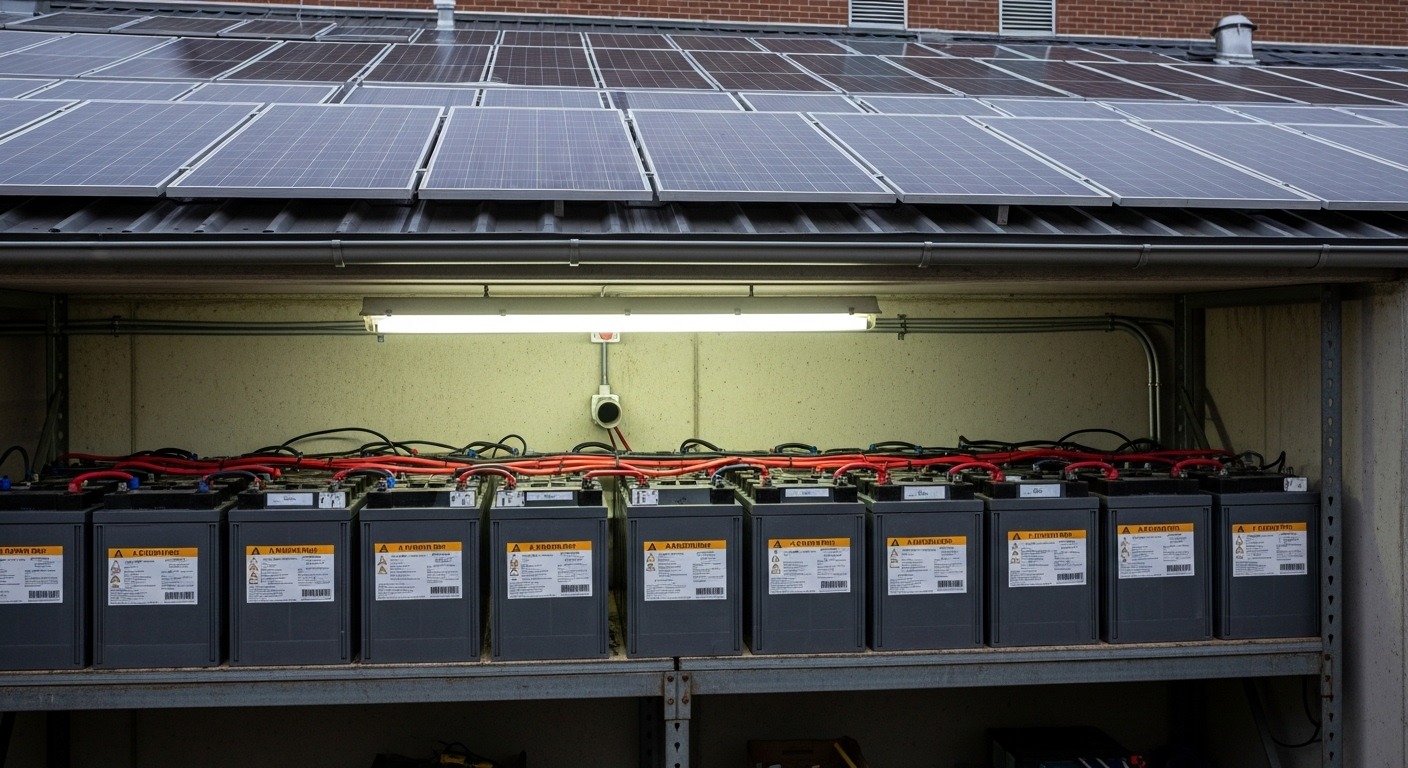
In any solar or backup system, the battery is the heart. It stores the electricity generated during the day and delivers it when you need it the most — whether during the night, in peak tariff hours, or during a power outage.
When it comes to batteries for solar and energy storage, Lithium-Ion and Lead-Acid are the two most widely used options. Both serve the same purpose — energy storage — but they differ drastically in performance, lifespan, cost, and maintenance requirements.
Choosing the right battery is crucial because it directly impacts the reliability, payback period, and long-term performance of your solar system.

Article By Hamza Nawaz
I’m solar energy professional at Ocentra Engineering Services and founder of Tech Burst Solutions. With expertise in project management, PV system designing, and electrical technology.
Working Principle
Lead-Acid Battery
Lead-Acid batteries use lead plates submerged in sulfuric acid electrolyte. During charging and discharging:
This technology has been around for over 150 years and is the most time-tested, low-cost storage solution.
Lithium-Ion Battery
Lithium-Ion batteries use lithium compounds as electrodes.
They are lighter, faster, and far more efficient than lead-acid, which is why they dominate electric vehicles, smartphones, laptops, and modern solar systems.
Advantages & Disadvantages
Lead-Acid Batteries
Advantages:
Disadvantages:
Lithium-Ion Batteries
Advantages:
Disadvantages:
Lithium-Ion vs Lead-Acid – Detailed Comparison
| Feature | Lithium-Ion Battery | Lead-Acid Battery |
| Technology | Modern, advanced | Old, traditional |
| Lifespan | 8–12+ years | 2–5 years |
| Cycle Life (charge/discharge) | 3,000–6,000 cycles | 500–1,000 cycles |
| Depth of Discharge (DoD) | 90–95% | 50% |
| Efficiency | 90–95% | 70–80% |
| Energy Density | High (lightweight, compact | Low (bulky, heavy) |
| Maintenance | None | Regular (for flooded types) |
| Charging Speed | Fast (1–3 hours) | Slow (6–10 hours) |
| Weight | Lightweight | Heavy |
| Cost (Initial) | High | Low |
| Cost (Lifetime) | Lower (fewer replacements) | Higher (frequent replacement) |
| Applications | Solar, EVs, electronics, premium storage | UPS, budget solar, automotive batteries |
Applications
Lead-Acid Battery Applications:
Lithium-Ion Battery Applications:
Reliability, Durability & Safety
Durability:
Cost Analysis
Lead-Acid:
Lithium-Ion:
In simple terms: Lead-Acid is cheaper today, Lithium-Ion is cheaper over 10 years.
Future Outlook
Globally, the trend is shifting rapidly towards Lithium-Ion batteries:
In Pakistan, while Lead-Acid batteries are still common in UPS and budget solar systems, more industries, businesses, and premium homes are moving towards Lithium-Ion solutions because of their durability and long-term savings.
Conclusion
Both Lithium-Ion and Lead-Acid batteries have a place in the energy market.
For budget-friendly or short-term setups, Lead-Acid may still work.
For serious solar investments, hybrid systems, or industrial use, Lithium-Ion is the best choice — offering higher efficiency, longer life, and better reliability.
As the world shifts towards clean energy, Lithium-Ion batteries are the future of solar and energy storage, while Lead-Acid will slowly remain limited to low-cost, short-term applications.
